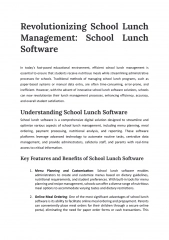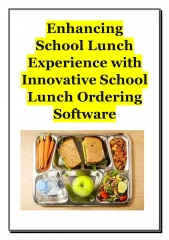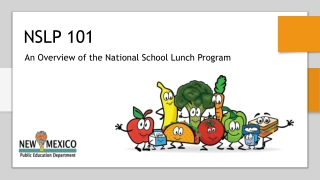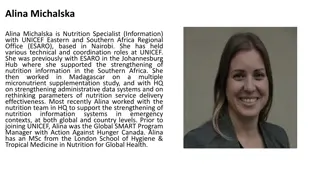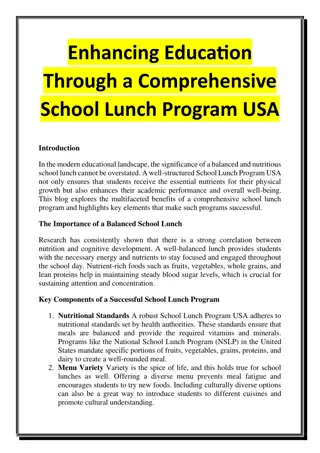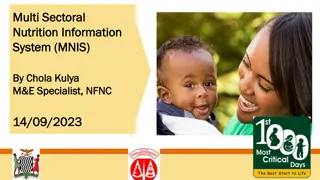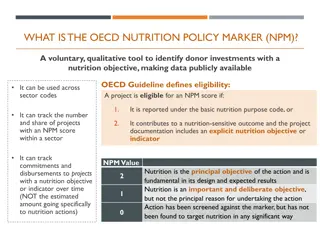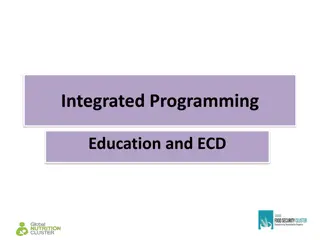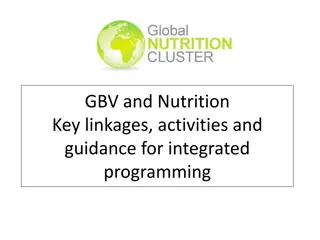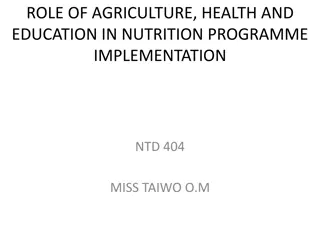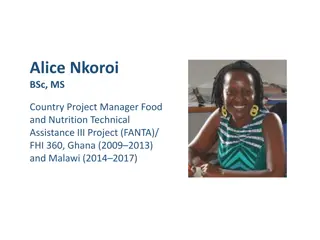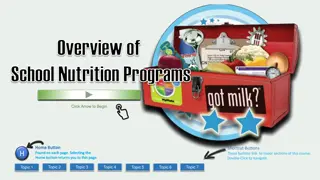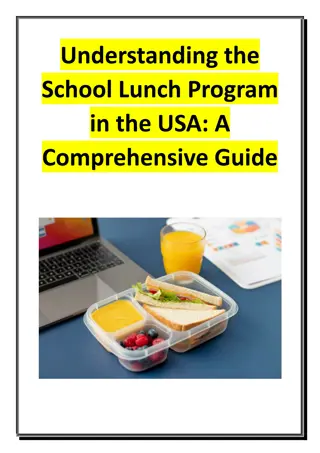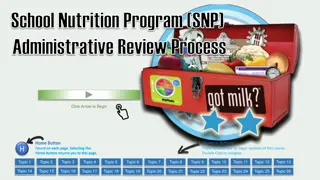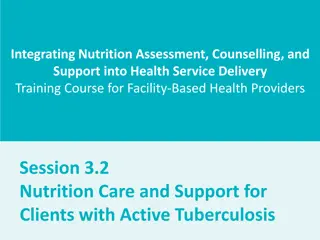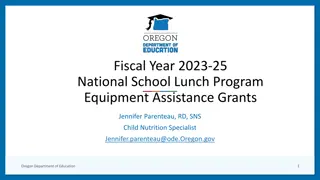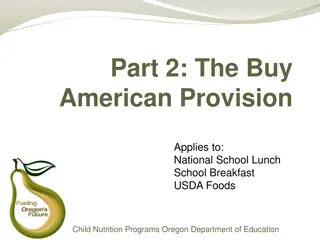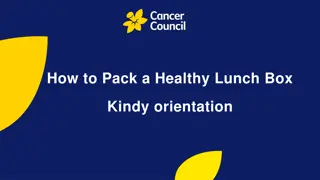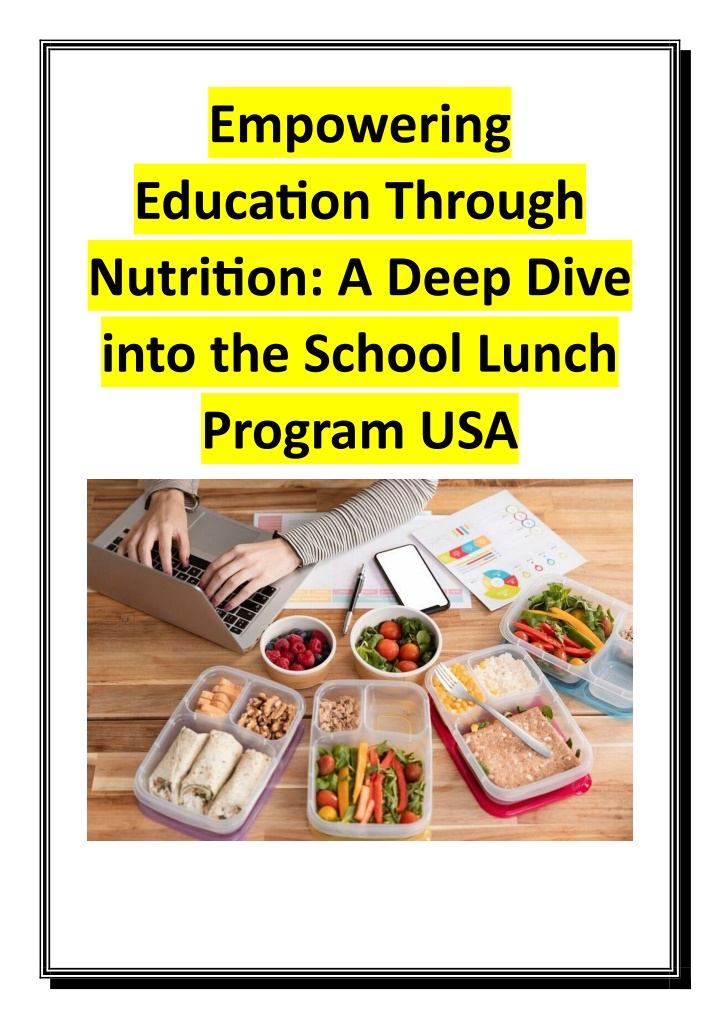
Empowering Education Through Nutrition - A Deep Dive into the School Lunch Program USA
Proper nutrition is essential for a childu2019s growth, development, and academic success. Recognizing this, the School Lunch Program USA plays a vital role in supporting the health and well-being of millions of children every day. This federal init
Uploaded on | 0 Views
Download Presentation

Please find below an Image/Link to download the presentation.
The content on the website is provided AS IS for your information and personal use only. It may not be sold, licensed, or shared on other websites without obtaining consent from the author. If you encounter any issues during the download, it is possible that the publisher has removed the file from their server.
You are allowed to download the files provided on this website for personal or commercial use, subject to the condition that they are used lawfully. All files are the property of their respective owners.
The content on the website is provided AS IS for your information and personal use only. It may not be sold, licensed, or shared on other websites without obtaining consent from the author.
E N D
Presentation Transcript
Empowering Education Through Nutrition: A Deep Dive into the School Lunch Program USA
Proper nutrition is essential for a childs growth, development, and academic success. Recognizing this, theSchool Lunch Program USAplays a vital role in supporting the health and well-being of millions of children every day. This federal initiative ensures that students across the United States have access to affordable, nutritious meals during the school day. In this article, we explore the significance, structure, benefits, and future of the School Lunch Program USA. The Foundation of the School Lunch Program USA TheNational School Lunch Program (NSLP)was established in 1946 under the National School Lunch Act, signed into law by President Harry S. Truman. It was created in response to concerns about malnutrition among American youth and the importance of proper nutrition for national security. Administered by theU.S. Department of Agriculture (USDA), the NSLP provides federally subsidized lunches to children in public and nonprofit private schools as well as residential child care institutions. Today, the program serves more than 30 million children each school day. How the Program Works Schools participating in the program receive federal funding and commodity foods from the USDA. In return, they must offer lunches that meet specific nutritional guidelines, which include: Providing meals that meet one-third of the Recommended Dietary Allowances (RDA) for calories, protein, calcium, iron, and vitamins A and C. Offering whole grains, fruits, vegetables, low-fat dairy, and lean proteins. Limiting sodium, saturated fat, and trans fat. Children from families with incomes at or below 130% of the poverty level are eligible for free meals. Those with family incomes between 130% and 185% of the poverty level qualify for reduced-price meals. Others pay a small fee determined by the school. The Importance of the School Lunch Program 1.Nutritional Support for Low-Income Families
Many families rely on school meals as a primary source of nutrition for their children. The program ensures that even students from low-income households receive at least one nutritious meal each school day, reducing food insecurity. 1.Academic Performance Numerous studies have shown a strong link between proper nutrition and improved academic outcomes. Students who eat balanced meals are more likely to perform better on tests, exhibit better behavior, and have higher attendance rates. 1.Promoting Healthy Habits The program educates students about healthy eating choices. By exposing children to fruits, vegetables, and whole grains early in life, it fosters lifelong healthy eating habits. 1.Economic Impact The program supports jobs in food production, agriculture, and education. Local farms often provide fresh produce, which boosts regional economies and encourages sustainable farming. Enhancements and Innovations Over the years, the program has evolved to meet the changing needs of children and society. Key updates include: a) Healthy, Hunger-Free Kids Act (2010) Signed by President Barack Obama and championed by First Lady Michelle Obama, this act implemented stricter nutritional standards for school meals. It required: More fruits and vegetables Whole grains Lower sodium content Calorie caps based on age groups b) Farm to School Initiatives
Many schools now partner with local farmers to incorporate fresh, locally grown foods into their menus. This initiative supports community agriculture and provides students with fresher options. c) Technology Integration With the rise of digital tools, schools now use software systems to streamline lunch orders, track student allergies, manage inventory, and allow parents to view menus and prepay online ensuring convenience and transparency. Addressing Challenges Despite its success, the School Lunch Program faces challenges: Stigma and Participation: Students receiving free or reduced-price meals may face stigma. Some schools have adopted universal free lunch programs to reduce this issue. Food Waste: New nutritional guidelines sometimes lead to uneaten food. Schools combat this with share tables, composting, and student engagement strategies. Budget Constraints: Rising food and labor costs put pressure on school budgets. Policymakers and school boards continue to advocate for increased funding and flexibility. The Role of Parents and Communities Parents and communities play a crucial role in supporting the School Lunch Program: Parental Involvement: Parents are encouraged to review menus, discuss healthy choices with their children, and participate in school wellness committees. Community Engagement: Local organizations, nonprofits, and volunteers often help with school gardens, nutrition education, and fundraising for food service improvements. The Future of the School Lunch Program USA The future of the program looks promising as innovation, advocacy, and technology continue to shape school meals. Key trends to watch include:
1.Universal Free Meals Many districts are exploring offering free meals to all students, regardless of income. This could increase participation, reduce stigma, and simplify administration. 1.Plant-Based and Allergy-Friendly Options As dietary preferences evolve, schools are introducing more plant-based, vegan, gluten-free, and allergy-conscious meals. 1.Sustainability Initiatives Environmental consciousness is growing. Schools are reducing plastic, composting food waste, and sourcing from sustainable farms to align with green goals. 1.Expanded Meal Programs Some districts now provide breakfast, dinner, and even weekend meal kits to support children beyond the school day. Conclusion TheSchool Lunch Program USAis more than just a meal service it is a lifeline for millions of students, a driver of educational success, and a cornerstone of community well-being. Through continued investment, innovation, and collaboration among schools, families, and policymakers, the program will remain a crucial part of America s educational and public health infrastructure. By ensuring that every child has access to nutritious meals, we are not only feeding bodies we are nourishing minds, shaping futures, and building a healthier, stronger nation.

